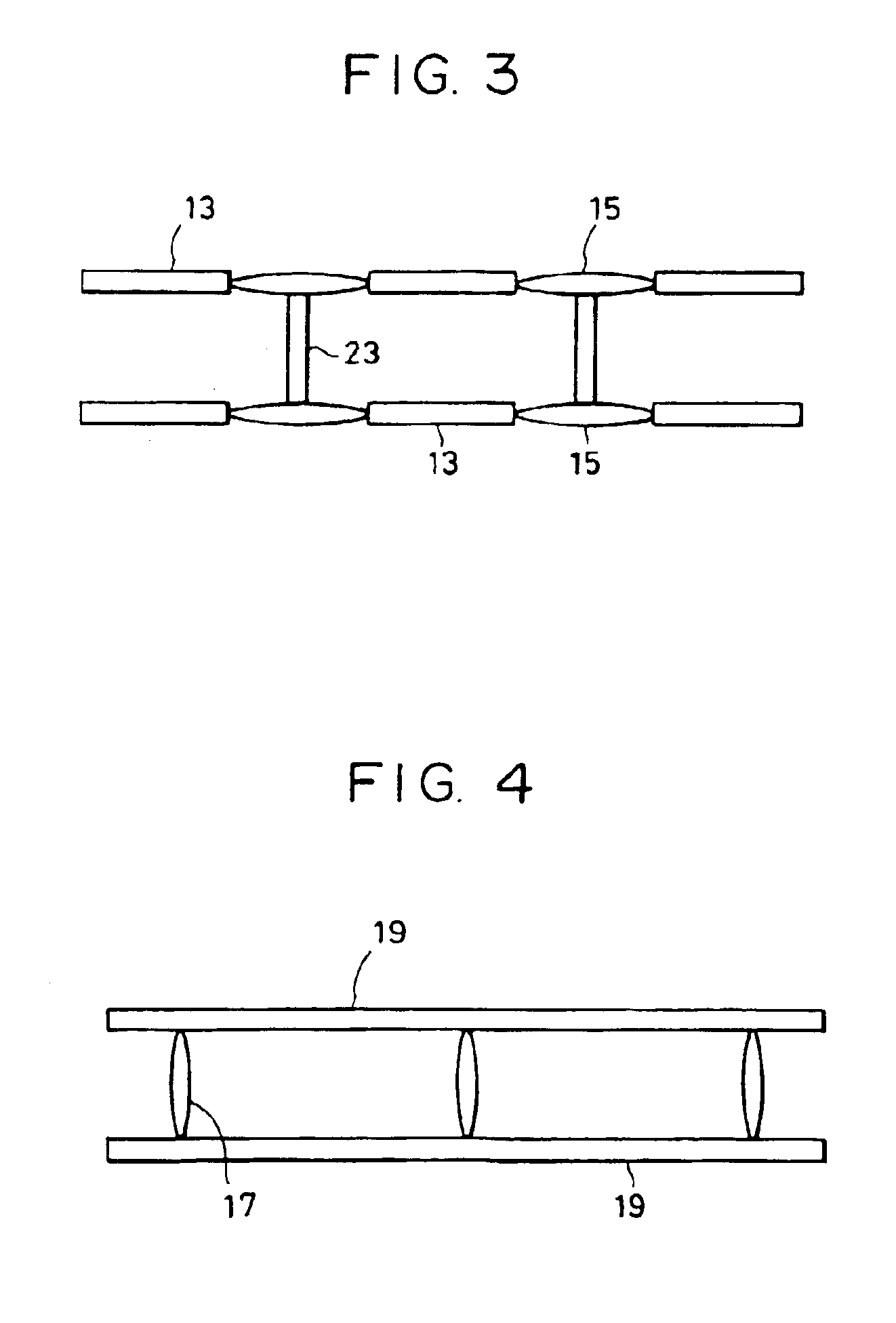Polymeric compound comprising glycopolymer and a method for decomposing the same
a polymer compound and glycopolymer technology, applied in the direction of drug compositions, detergent compounding agents, antibiotics, etc., can solve the problems of increasing the cost of recycling the decomposition products of waste plastic, soil pollution, and inability to readily degrade or recycle resins used for industrial materials. to achieve the effect of convenient recycling
- Summary
- Abstract
- Description
- Claims
- Application Information
AI Technical Summary
Benefits of technology
Problems solved by technology
Method used
Image
Examples
first embodiment
The First Embodiment
[0037]FIG. 1A illustrates the concept of a linear glycopolymer of the first embodiment and FIG. 1B explains the concept of decomposition of the linear glycopolymer of FIG. 1A. In FIG. 1A, oligosaccharide portions 11 and second-component portions 13 are linked to form the main chain of the glycopolymer. For example, each of the saccharide portions 11 and the second-component portions 13 are linked by an ester bond.
[0038]In general, one oligosaccharide molecule has 2 to 10 monosaccharide molecules. Oligosaccharides are classified into homo-oligosaccharides composed of one type of monosaccharide and hetero-oligosaccharides composed of not less than 2 types of monosaccharides, and both of these can be used as the oligosaccharide portions 11.
[0039]The oligosaccharide portions 11 contain a saccharide exclusively having glucopyranose rings, since heat resistance of the polymeric compound is improved by introducing the saccharide exclusively having glucopyranose rings to...
second embodiment
The Second Embodiment
[0051]In FIGS. 2 and 3, there are shown oligosaccharide or polysaccharide portions 15. The oligosaccharide or polysaccharide portions 15 and second-component portions 13 are linked by enzyme decomposable bonds, such as ester bonds, and form the main chain of the glycopolymer.
[0052]In FIG. 3, a crosslinking site 23 is provided, which crosslinks main chains, wherein the main chains consist of the oligosaccharide or polysaccharide portions 15 and the second-component portions 13.
[0053]A glycopolymer of the second embodiment can be prepared as follows: an oligosaccharide or polysaccharide having at least three reactive sites to a second component composing the second-component portions 13 is used as the oligosaccharide or polysaccharide portions 15 and is subjected to reaction with a dicarboxylic acid or the like which is employed as the second component. Examples of such a oligosaccharide are those having 3 to 10 monosaccharide molecules. Examples of such a polysac...
third embodiment
The Third Embodiment
[0060]In FIG. 4, there are shown oligosaccharide or polysaccharide portions 17 and second components 19 formed in molecular chains.
[0061]The second components 19 formed in molecular chains are crosslinked by the oligosaccharide or polysaccharide portions 17.
[0062]An oligosaccharide or a polysaccharide which can be used for the oligosaccharide portions 11 of the first embodiment or the polysaccharide portions 15 of the second embodiment, respectively, can be applied to the oligosaccharide or polysaccharide portions 17 of this embodiment.
[0063]The oligosaccharide or polysaccharide portions 17 contain a saccharide exclusively having glucopyranose rings so as to improve heat resistance of the polymeric compound, as is similar to the first and second embodiments. For the second component 19, a compound which has functional groups capable of reacting with the —OH group in the saccharide component is employed. Typical second components can form decomposable ester, ureth...
PUM
| Property | Measurement | Unit |
|---|---|---|
| Time | aaaaa | aaaaa |
| Time | aaaaa | aaaaa |
| Time | aaaaa | aaaaa |
Abstract
Description
Claims
Application Information
 Login to View More
Login to View More - R&D
- Intellectual Property
- Life Sciences
- Materials
- Tech Scout
- Unparalleled Data Quality
- Higher Quality Content
- 60% Fewer Hallucinations
Browse by: Latest US Patents, China's latest patents, Technical Efficacy Thesaurus, Application Domain, Technology Topic, Popular Technical Reports.
© 2025 PatSnap. All rights reserved.Legal|Privacy policy|Modern Slavery Act Transparency Statement|Sitemap|About US| Contact US: help@patsnap.com



